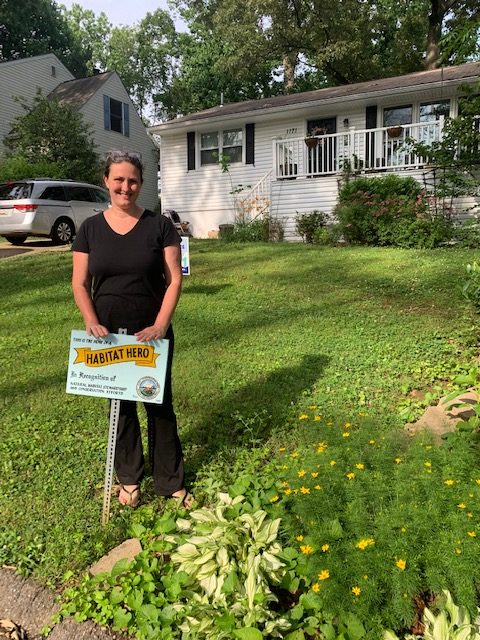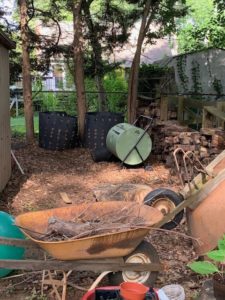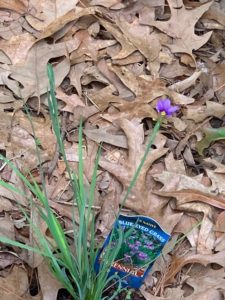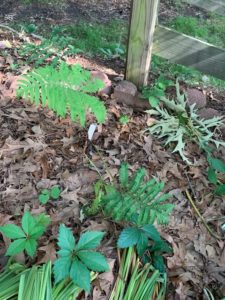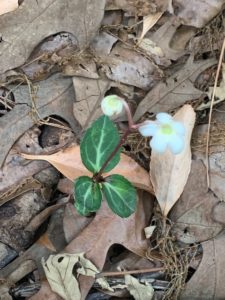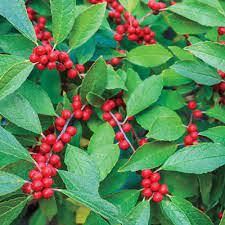
Native Plant Swap: SUCCESS!!
May 10, 2021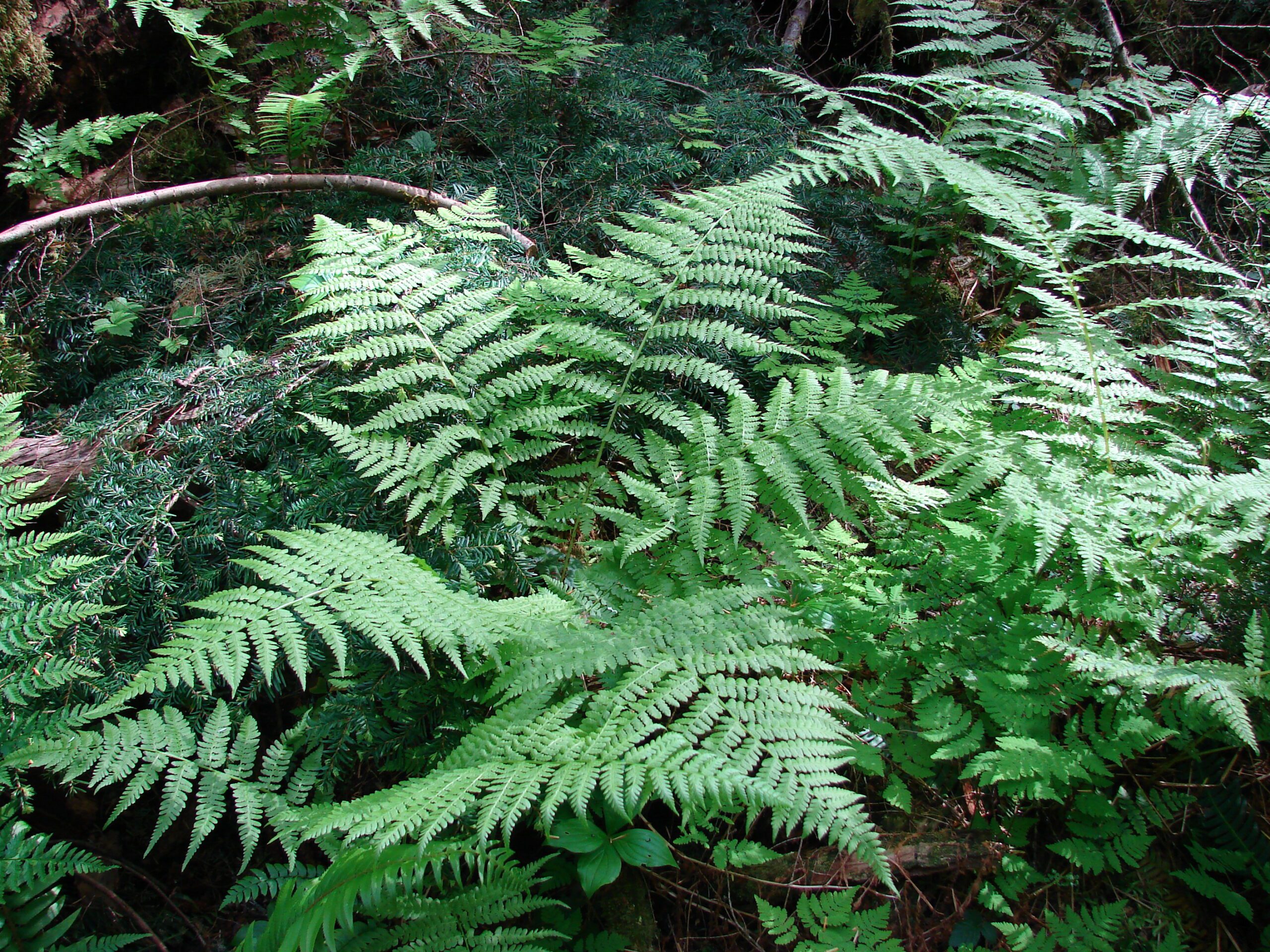
Spotlight on Ferns
June 22, 2021Terri Rafiq
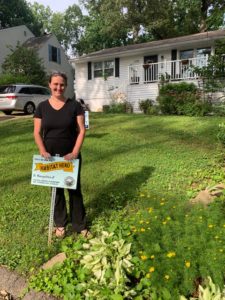
Everyone has to start somewhere and that is what our newest Habitat Hero has done. Terri Rafiq has designated areas in her yard for native plants and she started planting them! Her love for all wildlife is strong, but birds hold a special place in her heart and she is hoping to attract nesting birds to the yard by adding small understory trees and shrubs as possible nesting spots. She is putting in host plants for butterflies in hopes to have caterpillars for bird food! She has been collecting plants from neighbors sharing free native plants and has picked up many natives from the local garden club sale. Over 70 native plants in the ground this spring.
Curious as to what her inspiration was for starting on this journey I asked her to share how it began and she gave me the best answer I could hope for! “In my early work as a grad student researching songbirds, I learned how food availability in different seasons can affect reproductive success. I was also able to see the devastation invasive species can wreak on ecosystems. In recent years, and hearing about the steep decline in our bird populations, learning about Doug Tallamy’s research put many ideas all together for me. Having abundant wild food is so much more reliable and efficient than human-provided seeds and mealworms trucked all over the country and perhaps grown in unsustainable ways. I really believe in the difference one yard at a time can make.”
As I walked around the property with Terri I noticed the beautiful oak leaves she has filling her beds, using them as mulch among her newly planted natives. She keeps the leaves on site, either in the beds or in compost bins to use later. Her “lawn” is patches of clover or other volunteer green plants intermixed with bare patches, places that ground nesting, solitary and harmless bees can make their home.
The native beds line the fence along the backyard, outlined with fallen branches from the yard. Giving it a natural landscaped look. The beds are filled with many natives starting with Coreopsis in the front, spice bush (Lindera), red bud (Cercis), blue eyed grass (Sisyrinchium), service berry (Amelanchier), dogwood tree (Cornus), a volunteer fleabane (Conyza), a bright patch of bee balm (Monarda). Even around the mailbox she has two types of spiderwort (Tradescantia), one planted, the other a volunteer.
Coming around the side of the house there is a patch of ferns, ostrich (Matteuccia struthiopteris) and sensitive (Onoclea sensibilis) that will fill together nicely. Everywhere you look is FREE native that has come up and been welcomed to the yard. There is Virginia creeper (Parthenocissus quinquefolia), which will offer wonderful fall color and wildlife value, here is a patch of striped wintergreen (Chimaphila maculate) that has popped and been allowed to spread even the boneset (Eupatorium perfoliatum) is a welcome volunteer because she realizes the great pollinator value to this plant.
There are lots of host plants like milkweed (Asclepias) , turtlehead (Chelone), Joe-Pye weed (Eutrochium), violets (Viola), golden alexander (Zizia aurea), goldenrods (Solidago), and asters that will attract specialized butterflies and moths to lay their eggs. An all-time favorite ground cover of mine is making its way around an oak tree, golden ragwort (Packera aurea). When the larvae that have been munching on oak leaves all summer are ready to drop to ground and pupate they will have plenty of vegetation at the bottom of this oak to shelter in. Or if it is one that chooses to burrow into the ground, the soil around the oak will be soft enough to allow for this thanks to the native root system that has loosened the soil.
As I made way through the rest of the yard I noticed the lobelia, brown eyes Susan (Rudbeckia triloba), dwarf crested iris (Iris cristata) and phlox, creeping (Phlox stolonifera) and woodland (Phlox divaricata). Teri has planted a large variety of plants so she will have something in bloom throughout spring and right into the later fall to keep the pollinators and other wildlife creatures happy. The mayapples (Podophyllum) and the Virginia bluebells (Mertensia virginica) have gone to sleep until next spring but they will offer a nectar source for early pollinators (the Virginia bluebells) and a favorite snack of the eastern box turtles (the mayapples). The sea oats (Chasmanthium latifolium), an aggressively spreading grass has found a place in the corner where it will be allowed to spread its seed. Come fall she will be rewarded by the beautiful golden seedhead.
I am sure I missed some of the native plants I saw that day but they are all welcomed into her yard to help create a healthy ecosystem, a place welcoming to turtles, snakes, frogs and toads (all of which she has found in her yard). There are many places that invite creatures to call her backyard home, from the brush piles, leaves in the beds and the native plants. Her future plans include adding some pinks to the landscape, delicate wildflowers and irises. She would also like to add some mid-height shrubs for another layer of structure and improve her ID skills on the butterflies and caterpillars that come through!
Terri is grateful for the time and resources to work on transforming her property into a biodiverse ecosystem that provides habitat, food, water and resources for so much wildlife! Thank you Teri for being a Habitat Hero!


